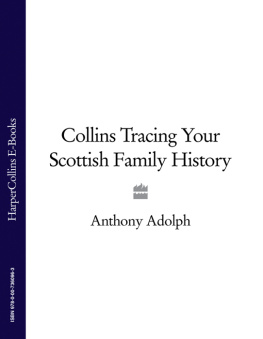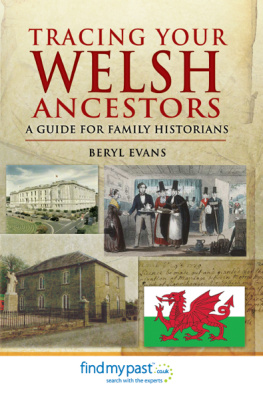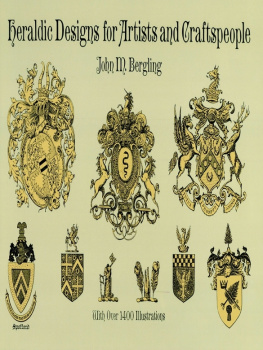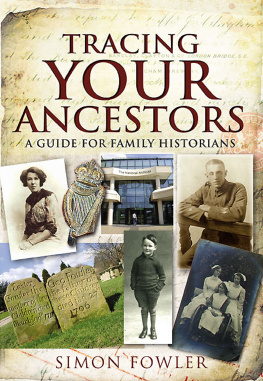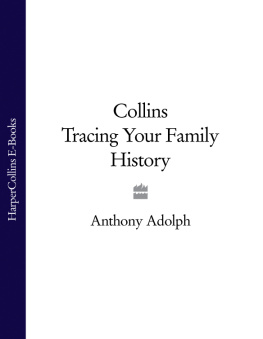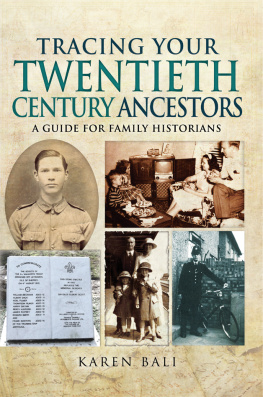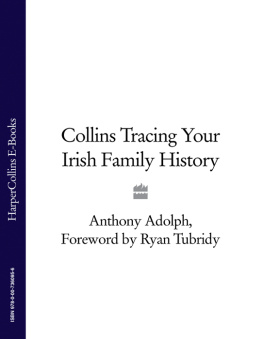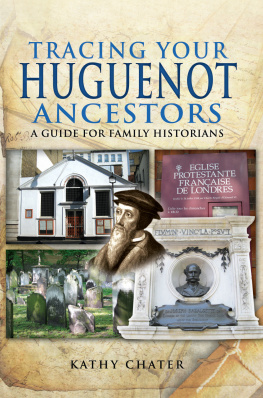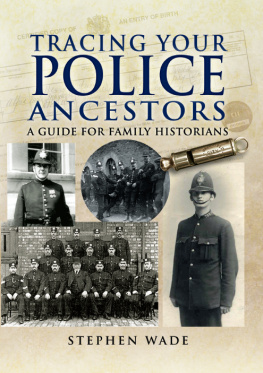First published in Great Britain in 2013 by
PEN & SWORD FAMILY HISTORY
An imprint of
Pen & Sword Books Ltd
47 Church Street
Barnsley
South Yorkshire
S70 2AS
Copyright Anthony Adolph, 2013
ISBN 978-1-78159-164-2
eISBN 9781783376490
The right of Anthony Adolph to be identified as the author of this work has been asserted by him in accordance with the Copyright, Designs and Patents Act 1988.
A CIP catalogue record for this book is available from the British Library.
All rights reserved. No part of this book may be reproduced or transmitted in any form or by any means, electronic or mechanical including photocopying, recording or by any information storage and retrieval system, without permission from the Publisher in writing.
Typeset by Concept, Huddersfield, West Yorkshire.
Printed and bound in England by CPI Group (UK) Ltd, Croydon, CR0 4YY.
Pen & Sword Books Ltd incorporates the imprints of
Pen & Sword Aviation, Pen & Sword Family History, Pen & Sword Maritime,
Pen & Sword Military, Pen & Sword Discovery, Wharncliffe Local History,
Wharncliffe True Crime, Wharncliffe Transport, Pen & Sword Select,
Pen & Sword Military Classics, Leo Cooper, The Praetorian Press,
Remember When, Seaforth Publishing and Frontline Publishing.
For a complete list of Pen & Sword titles please contact
PEN & SWORD BOOKS LIMITED
47 Church Street, Barnsley, South Yorkshire, S70 2AS, England
E-mail: enquiries@pen-and-sword.co.uk
Website: www.pen-and-sword.co.uk
FAMILY HISTORY FROM PEN & SWORD
Birth, Marriage and Death Records
David Annal and Audrey Collins
Tracing Your Channel Islands Ancestors
Marie-Louise Backhurst
Tracing Your Yorkshire Ancestors
Rachel Bellerby
The Great War Handbook
Geoff Bridger
Tracing Your Royal Marine Ancestors
Richard Brooks and Matthew Little
Your Rural Ancestors
Jonathan Brown
Tracing Your Pauper Ancestors
Robert Burlison
Tracing Your East End Ancestors
Jane Cox
Tracing Your Huguenot Ancestors
Kathy Chater
Tracing Your Labour Movement Ancestors
Mark Crail
Napoleonic Lives
Carole Divall
Tracing Your Ancestors
Simon Fowler
Tracing Your Army Ancestors
Simon Fowler
A Guide to Military History on the Internet
Simon Fowler
Tracing Your Northern Ancestors
Keith Gregson
Tracing Your Dead Ancestors
Celia Heritage
Your Irish Ancestors
Ian Maxwell
Tracing Your Northern Irish Ancestors
Ian Maxwell
Tracing Your Scottish Ancestors
Ian Maxwell
Tracing Your London Ancestors
Jonathan Oates
Tracing Family History on the Internet
Christopher Patton
Great War Lives
Paul Reed
Tracing Your Tank Ancestors
Janice Tait and David Fletcher
Tracing Your Air Force Ancestors
Phil Tomaselli
Tracing Your Second World War Ancestors
Phil Tomaselli
Tracing Your Secret Service Ancestors
Phil Tomaselli
Tracing Your Criminal Ancestors
Stephen Wade
Tracing Your Legal Ancestors
Stephen Wade
Tracing Your Police Ancestors
Stephen Wade
Tracing Your Jewish Ancestors
Rosemary Wenzerul
Fishing and Fishermen
Martin Wilcox
Tracing Your Canal Ancestors
Sue Wilkes
Tracing Your Lancashire Ancestors
Sue Wilkes
CONTENTS
To Ann Rietchel, my aunt and godmother,
who did so much to encourage me to read
and to enjoy the world of books.
Jacket photograph credits . Top, left: John Churchill, 1st Duke of Marlborough by Sir Godfrey Kneller (Taylor Library); centre: coat of arms of the Herveys of Ickworth, Suffolk, painted by Tom Meek; right: Henry Jermyn, later Earl of St Albans, from a portrait by Van Dyck (copyright Dorotheum, Vienna). Bottom, left: Harleian Society visitations in the Society of Genealogists; centre: title page of Collins Peerage , in the Society of Genealogists; right: Georgiana, Duchess of Devonshire by Sir Joshua Reynolds (Taylor Library).
INTRODUCTION
I would have you know, Sancho, that there are two kinds of lineages in the world: those which trace their descent from princes and monarchs, and which little by little time has diminished and reduced to a point like a pyramid upside down: and others which derive their origin from common folk, and climb step by step till they achieve the dignity of great lords. So that the difference is between those who were and are no longer, and those who are but once were not. It is possible that I may prove to be one of the former, and that, on enquiry, my descent may prove great and noble ...
S o said Don Quixote, in the words of his seventeenth-century creator, Miguel de Cervantes. Although we tend not to think of Don Quixote as an aspiring amateur genealogist, he was evidently very keen to discover his aristocratic ancestry.said Don Quixote, in the words of his seventeenth-century creator, Miguel de Cervantes. Although we tend not to think of Don Quixote as an aspiring amateur genealogist, he was evidently very keen to discover his aristocratic ancestry.
Very little has changed over the four centuries since Cervantes lived. When it became apparent that Kate Middleton was likely to marry Prince William of Wales, genealogists and journalists went into a flurry of activity to trace her roots. What they wanted most was to link her back to aristocratic forebears, who might open the gateway to that Holy Grail of genealogy royal blood.
As a professional genealogist, I hear regularly from people with stories of aristocratic and royal connections. It is one of the chief reasons why people start investigating their ancestry. It may well be why you are reading this now.
It is a desire I understand very well from my own experience. I grew up with several family stories about aristocratic ancestors. Assuming they were true, I enjoyed exploring all the illustrious connections with which these provided me.
One descent purported to go back to the Dukes of Somerset, and came with a detailed pedigree to prove it. Aged 14 and entirely ignorant of how to go about such matters, I wrote to the present duke, who very kindly directed me to a copy of Burkes Peerage , which you should find in your local library. Good hunting!
A lot of hunting ensued. I found Burkes , alright, and plunged for the first time into its densely printed narrative pedigrees, eagerly waiting for my connection to appear. It didnt. Eventually, I came to the crushing conclusion that the pedigree I had inherited was wrong, the product of an over-active nineteenth-century imagination.
Later, however, tracing back up another part of the same side of the family, I came to a family who really were listed in Burkes Landed Gentry . Some of their wives were daughters of baronets, some of whom in turn had married daughters of barons, whose pedigrees were in Burkes Peerage . On I went, back in time, and ever higher up the social scale, past the dukes until, one fine day, I found a genuine descent from the Blessed Margaret Pole, the last of the Plantagenets, and a great-great-great-granddaughter of Edward III.
It just goes to show: the more you persist, the more likely you are to find what you want.
For me, Margaret Pole became not an end, but a beginning. She was one of Cervantes points like a pyramid upside down. Tracing back through her four grandparents and eight great-grandparents led back to a glittering array of Plantagenet kings and foreign royals, and English aristocrats and Welsh dynasts. Going back even further, Margarets ancestry led me into the realm where reality merges with myth, to Arthur, Adam and Eve, and even to the goddess Aphrodite.



